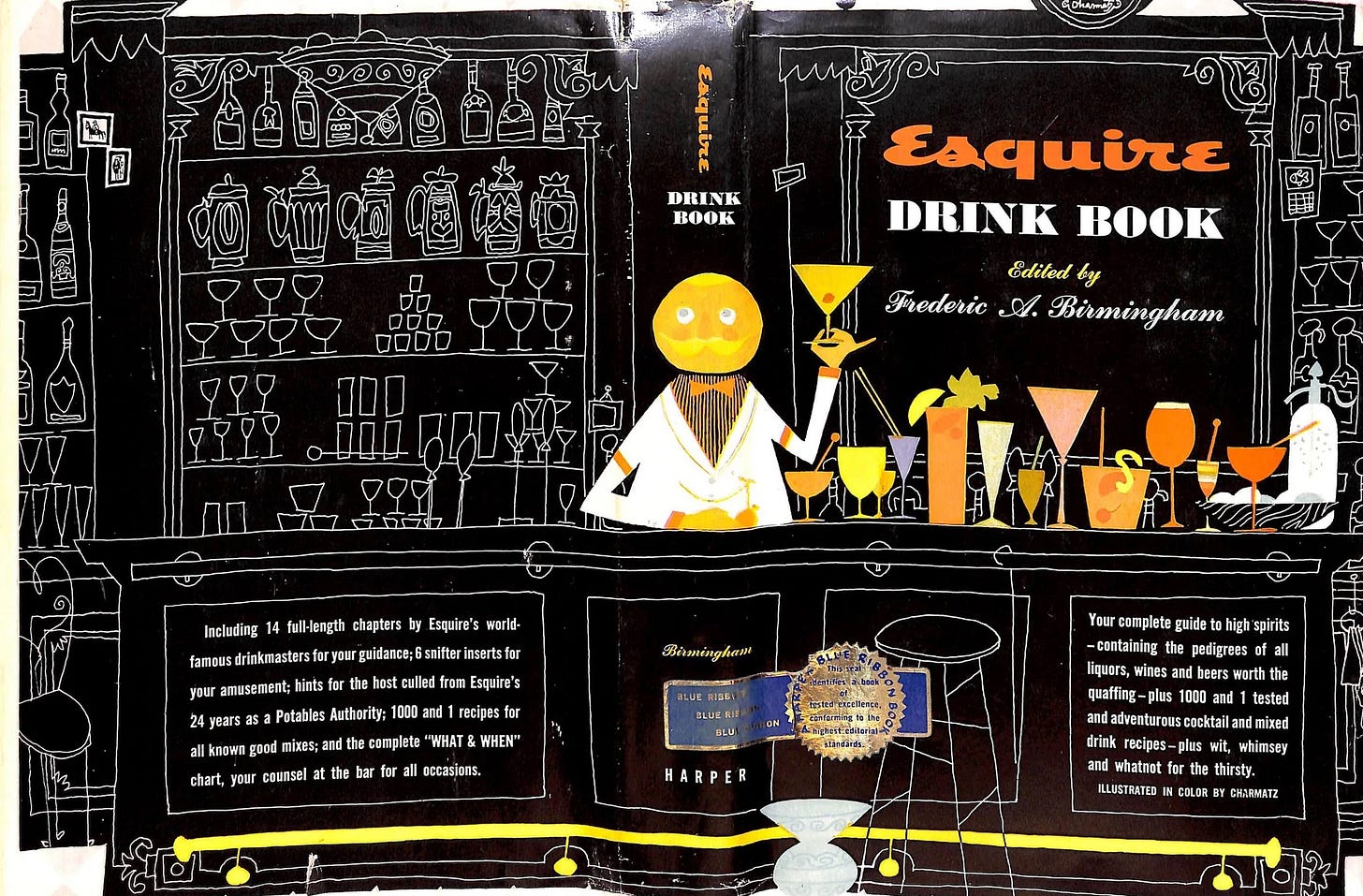Drinking: Cocktails: The Martini
Sophistication: Youthful Efforts to Acquire It
Reservations Recommended, Chapter 1:
WHEN HE WAS YOUNG, Matthew developed an affection for the martini well before he ever drank one, an affection that came in part from watching William Powell and Myrna Loy down them in the Thin Man movies and in part from his careful study of Esquire, the text from which he hoped to learn sophistication.

Luis Buñuel, “Earthly Delights” in My Last Sigh, his autobiography, written with the acknowledged assistance of Jean-Claude Carrière, translated by Abigail Israel:
To provoke, or sustain, a reverie in a bar, you have to drink English gin, especially in the form of the dry martini. To be frank, given the primordial role in my life played by the dry martini, I think I really ought to give it at least a page. Like all cocktails, the martini, composed essentially of gin and a few drops of Noilly Prat, seems to have been an American invention. Connoisseurs who like their martinis very dry suggest simply allowing a ray of sunlight to shine through a bottle of Noilly Prat before it hits the bottle of gin. At a certain period in America it was said that the making of a dry martini should resemble the Immaculate Conception, for, as Saint Thomas Aquinas once noted, the generative power of the Holy Ghost pierced the Virgin’s hymen “like a ray of sunlight through a window—leaving it unbroken.”
Another crucial recommendation is that the ice be so cold and hard that it won’t melt, since nothing’s worse than a watery martini. For those who are still with me, let me give you my personal recipe, the fruit of long experimentation and guaranteed to produce perfect results. The day before your guests arrive, put all the ingredients—glasses, gin, and shaker—in the refrigerator. Use a thermometer to make sure the ice is about twenty degrees below zero (centigrade). Don’t take anything out until your friends arrive; then pour a few drops of Noilly Prat and half a demitasse spoon of Angostura bitters over the ice. Shake it, then pour it out, keeping only the ice, which retains a faint taste of both. Then pour straight gin over the ice, shake it again, and serve.
(During the 1940s, the director of the Museum of Modern Art in New York taught me a curious variation. Instead of Angostura, he used a dash of Pernod. Frankly, it seemed heretical to me, but apparently it was only a fad.)
See also: Drinking: Cocktails, Cocktail Shakers TG 57; Drinking; Smoking TG 15; Cocktails, Old Fashioned TG 132; Cocktails: The Shirley Temple TG 150; Cocktails: The Martini TG 415
Issue Number 12 of The Babbington Review is now on Substack.
Have you missed an episode or two or several?
You can begin reading at the beginning or you can catch up by visiting the archive or consulting the index to the Topical Guide.
You can listen to the episodes on the Personal History podcast. Begin at the beginning or scroll through the episodes to find what you’ve missed.
You can ensure that you never miss a future issue by getting a free subscription. (You can help support the work by choosing a paid subscription instead.)
At Apple Books you can download free eBooks of Little Follies and Herb ’n’ Lorna.
You’ll find overviews of the entire work in An Introduction to The Personal History, Adventures, Experiences & Observations of Peter Leroy (a pdf document) and at Encyclopedia.com.



